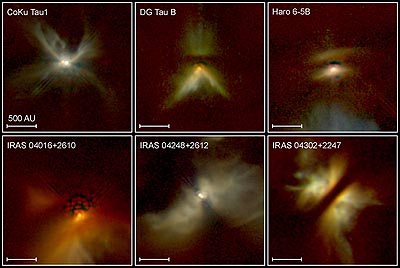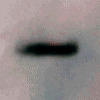syllabus & important stuff & course links
Astronomy
Picture of the Day the
latest astrophysics discoveries
what's up in the sky
this week
Skywatcher's
Diary for this month
|
May 16 |
May 17 |
May 18 |
May 19 |
May 20 |
Monday,
May 23 |
|
|
|
|
|
|
|
final
project presentations at 6 pm please arrive 5 - 10 minutes early, or else we may need to return at 8:30 pm? |
|
|
(always done before class) |
22(1-4) |
(not very much about it in your text), which is the key to understanding stellar death red giant evolution investigate planetary nebula evolution (see pictures and links below) |
follow the energy: of the supernova explosion: where did the energy come from? (1 source) where did it go? ( 6 sources) |
bring a list of ways in which supernova 1987A was a first or of otherwise importance to astronomers bring a list of the top 5 forms of energy left after the explostion and the 1 energy present before the explosion (that turned into all the energies after) even better, bring a calculation (or two!) of those energies above |
how did we discover neutron stars? if you had discovered a regularly pulsing (flashing) source with a (very regular) period of about 1 second -- like Jocelyn Bell, you might think that you had discovered a signal from aliens... how would you decide if it was an intelligent signal or just something astronomical? what are they like? type Ia SN happen in binaries |
|
| homework |
have
you firmed up your final project? |
questions
for class: what's the 3rd assumption made in deriving the ideal gas law? what force pushes the planetary nebula away from the star? (or, equivalently, what transfers momentum to the planetary nebula?) how do planetary nebula shapes evolve? what do the electrons in a completely degenerate gas move fast? (remember that you can't say 'because it's hot') why do the more massive stars go on to more rounds of fusion than the low mass stars? (or in other words, why dont they become degenerate and, therefore, die?) see energy questions about supernova above? |
||||
|
|
white dwarfs and electron degeneracy |
the evolution
of
planetaries: the youngest known PN,
the Stingray,
is only 20 years (!) old NGC
7027 has a plane of dust
(perhaps due to a binary companion?) &
concentric rings in the gas shell the Egg
(ir); the dust disk is much easier to see in the infrared another Hourglass
one from a different perspective a hubble
cartoon shows how these hourglass nebulas are shaped by a
binary companion the Cocoon shows
what a PN will look like after the nebula stars to dissipate |
|
(best movies are the ones at the very top) the crab pulsar: on and off Crab Nebula: The Pulsar Wind |
|
|
|
|
|
|
|
|
|
|
|
|
|
a great place to start a great variety of shapes |
|
|
|
May 9 |
May 10 |
May 11 |
May 12 |
May 13 |
|
|
|
know the specific names of objects that are in the process of forming stars |
think about & decide final project (with partner) |
|
|
|
|
(always done before class) |
find out how the protostars cooled off BEFORE they became protostars (not WHILE they are protostars!), since we didnt do so well on that question in friday's JIT... the answer is IN last friday's reading! section 20(7) |
|
|
7(9) on extrasolar planets & the page "Alien Planets" just following it; then read the extrasolarplanet summary below; take some notes, so that you can intelligently about the different groups of extrasolar planets and how they got to be the way they did also helpful: 4(8) & box 9-1 on the origin of tides and 9(5) on lunar migration and the origin of the moon it would also be nice to pick one of the "this just in" weblinks under wednesday and read a short bit about it and come to class with both questions and descriptions |
read the article "A decade of brown (dwarfs)" from May 2005 Sky and Telescope (you got a photocopy yesterday; it's also on reserve in the library) in conjunction with the blue book pages 31-32 (which I wrote 2 years ago)... what's wrong, what's right, what's new? |
| homework |
due
tonight: pick a nuclear reaction (NOT one that is done in Walker) & 1) write the reaction showing that it obeys the 3 conservation laws that involve quantized quantities 2) find the energy released in the form of kinetic & light (make sure that you use the standard problem solving method of conservation of energy that i used in class also, remember that the masses in appendix E are for neutral atoms, and not nuclei, as are the things in your reaction... so remember to take care of electrons properly, as I did in class) 3) find the efficiency of your reaction |
for
your object (Barnard object, Bok globule, etc.) 1) state the mass, radius, and temperautre (and tell me where you got the info from) 2) find the a) gravitational energy b) kinetic energy c) total energy of your object 3) from your answers, predict whether your object should be contracting, static, or expanding (this of course should fit with what you know the object is actually doing!) dont forget to check units... and tell me your object's type/name!!! (I wont remember what group you're in) in the blue book, page, p. 26, IGNORE the last column in the table MJ ! the useful column is the second last column, which is the mass in solar units |
have
you done the homework in the "reading" box under tuesday? |
||
|
|
the GMC at the heart Of Orion Dark Bok
Globules in IC 2944 star formation: star formation propagation(grav collapse induced by shock wave from O/B stellar winds) M16 before
hubble shock-wave
triggered starbirth star
death/supernova: Cygnus
loop shock wave spiral shock waves in galaxies: M51 as seen by
Hubble 2005 M83's emission nebulae
and its spiral arms a bow shock near LL Orionis galaxy collisions: the Antennae: visible and infrared and x-ray |
|
(theory in pictures) the first observations of jets and
disks during stellar
birth Stellar
Disks Set Stage for disks without
jets: planet
building?:
Orion Nebula
Mosaic and Protoplanetary Disks making protoplanets
at beta Pictoris how appropriate: today's Astro Picture of the day is of the first extrasolar planet signs of an alien
asteroid belt |
interstellar sugar provides clue to origin of lifesummary of extrasolar planets properties |
an updated version of the blue book pp. 31-32 the brown dwarf smoking gun gif |
|
|
|
|
|
|
|
|
|
|
|
red
speck is indeed a new
giant planet X-ray Super-Flares Aid Formation of "Solar Systems" |
|
|
May 2 |
May 3 |
May 4 |
May 5 |
May 6 |
|
|
|
OBSERVATORY OPENS AT 8:30 PM ! BRING YOUR STAR CHARTS (DRESS WARMLY: IT WILL BE IN THE 50s) |
|
|
by 1 pm |
|
|
(always done before class) |
neutrino mass article; finish worksheet at the end of the canary handout |
what does the sudbury experiment add to our knowledge about the solar neutrino problem? are there other experiments that we need to do that would put more nails in the coffin (of solving the solar neutrino problem), or is it over? Univers 21(1), including boxes 21(1&2) UP TO the bottom of the left column on page 482... questions (bring the answers to class tomorrow): a) what is wrong with their main-sequence-lifetime calculation in box 21(2)? (hint: Toan will not be in class tomorrow to remind us) b) the fraction f in the first equation of box 21(2) actually stands for a product of 3 separate numerical fractions; what are each of the fractions (expressed both in words and then as a number) c) in section 21(1) and the associated boxes, it is claimed that massive stars have shorter lives than less massive stars... but how do we KNOW (i.e., from observations) that this is true? (and the answer isnt that we just sit around and watch massive stars and non-massive stars evolve and see which dies first... why not?) |
[Walker on energy transfer processes postponed until tomorrow] questions for today: a) leftover from yesterday: in section 21(1) and the associated boxes, it is claimed that massive stars have shorter lives than less massive stars... but how do we KNOW (i.e., from observations) that this is true? (and the answer isnt that we just sit around and watch massive stars and non-massive stars evolve and see which dies first... why not?) b) ultimately we want to know how the red-giant lifetime of the sun compare (ratio!) to the main-sequence lifetime of the sun... to answer, you will need to know what the energy sources are in the red-giant phase (remember, I already talked about this in class; hint: there are 2) and then, the 3 fractions that correspond to these energy sources (i just want you to know/bring the fractions to class, although if you want to go farther and actually find a number that's ok too) c) what are the 3 sources of pressure that can be used by a star to push out vs. gravity?; be able to write down a law or describe the source of the pressure qualitatively (use your knowledge of chemistry, your cultural literacy, and your personal experience) |
d) why does the pressure have to increase as you go toward the center of the sun? e) how should one write the ideal gas law (yeah, that one from chemistry)?: which variable(s) should be on the left side and which variable(s) should be on the right side? (and what decides "sides" anyway?) 18(3) and walker 16(6) on the 3 mechanisms of energy transfer: what are the 3 energy transfer mechanisms that move energy from the core to the surface and how do they work? which of these happen in the sun? in what portion of the sun? how long do these processes take? don't concern yourself too much with the fancy equations in walker, but mostly with being able to describe what is happening qualitatively also, begin chapter 20 for friday? |
convection near and far: convection in the kitchen: p.182 convection in the earth's liquid core: p.184 plate tectonics in the mantle: p.189 convection cells and winds in Earth's atmosphere, p. 197 circulation cells in Venus' atmosphere, p. 247 convection in Jupiter's atmosphere, p. 291 convection in the solar photosphere, p. 401 convection in protostars, p. 462 convection (dredge-up) in red giants, p. 503 |
| homework |
see
above |
possible final projects | |||
|
|
the superkamiokande detector before it was damaged by a freak chain-reaction processdamage
to the SK detector two nice (but longish) articles from the Nobel prize archives:How the Sun Shinesthe Mystery of the Missing Neutrinosimages from the neutrino article handed out last week(one of the experiments that shared the nobel prize in physics 2.5 years ago) |
Tiny, Plentiful, and Really Hard to Catch |
|
|
|
|
|
|
|
|
|
|
|
|
Deep Impact spots its comet Wonderful star reveals its hot nature Hubble Celebrates 15th Anniversary with Spectacular New Images |
|
|
|
astro pages for April 2005




